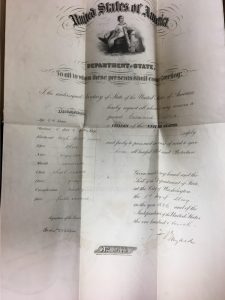Week 14 LCHS
 It is my last week here at Luzerne County Historical Society. During my last week, I mainly did research requests and organized some files the society already had. For instance, one research request I worked on was for Ross Township, Pennsylvania. I had to research Mt. Spring’s Lake for any clues as to whether the lake was man made or not. None of the information Luzerne County Historical Society had would not assist the researcher. However, with working on the request I came across some interesting information. For example, there is a 2003 article pertaining to the dam in Mt. Spring’s Lake. The article stated that individuals felt that the dam should be reconstructed due to the dam’s disintegration over time. There were other information pertaining to the history of the dam I came across that I thought were intriguing too, which increased my interest in the topic overall. The Librarian/Archivist informed me from what she heard that the individuals in Ross Township were contemplating to destroy the dam altogether. In all, I did not know much about Ross Township, but because of the request I got to learn about the township that I live close to.
It is my last week here at Luzerne County Historical Society. During my last week, I mainly did research requests and organized some files the society already had. For instance, one research request I worked on was for Ross Township, Pennsylvania. I had to research Mt. Spring’s Lake for any clues as to whether the lake was man made or not. None of the information Luzerne County Historical Society had would not assist the researcher. However, with working on the request I came across some interesting information. For example, there is a 2003 article pertaining to the dam in Mt. Spring’s Lake. The article stated that individuals felt that the dam should be reconstructed due to the dam’s disintegration over time. There were other information pertaining to the history of the dam I came across that I thought were intriguing too, which increased my interest in the topic overall. The Librarian/Archivist informed me from what she heard that the individuals in Ross Township were contemplating to destroy the dam altogether. In all, I did not know much about Ross Township, but because of the request I got to learn about the township that I live close to.
My overall experience at the Luzerne County Historical Society was great. I got to learn a lot of information about families that lived in Luzerne County, as well as different townships and facilities. The Librarian/Archivist was great at assisting me with any questions I had pertaining to any of the assignments I had and most importantly, about her career that I am interested in pursuing. Furthermore, the Executive Director there was great at assisting me with what path I should take or graduate classes that would be beneficial for me in the field. I hope in the near future I will be able to go back and volunteer there.



